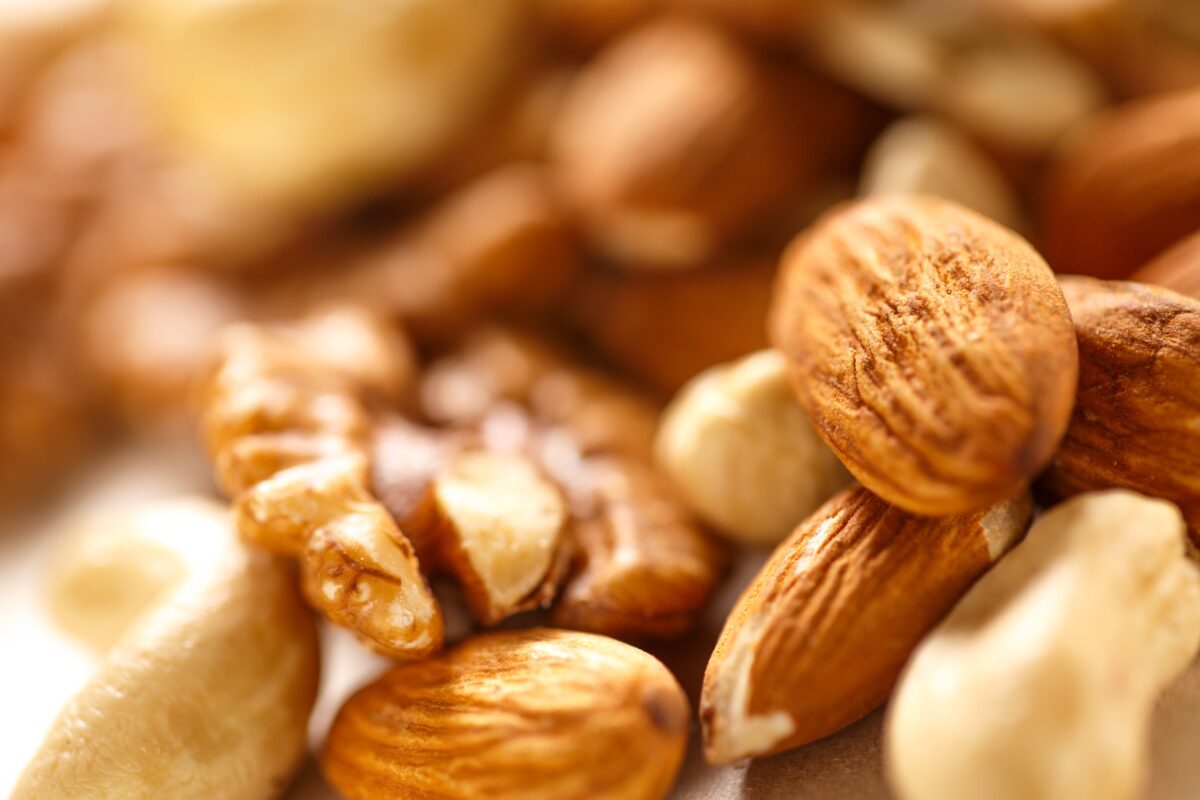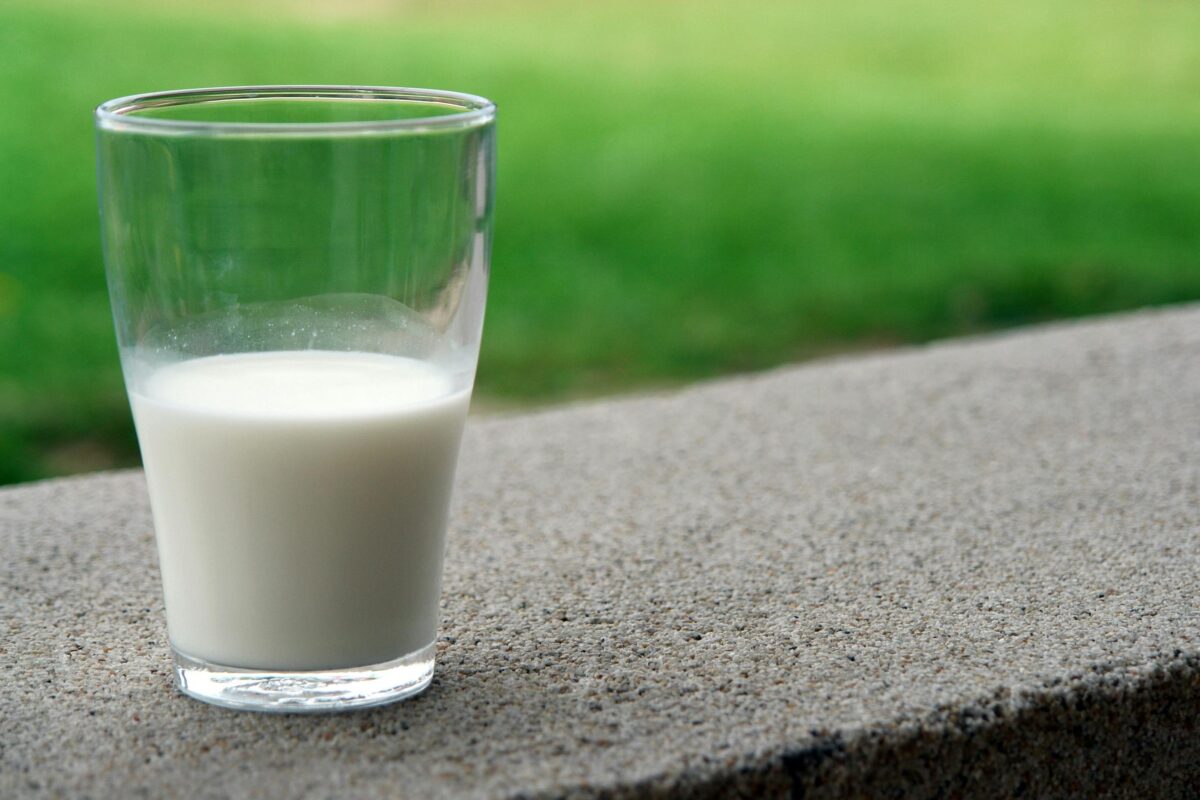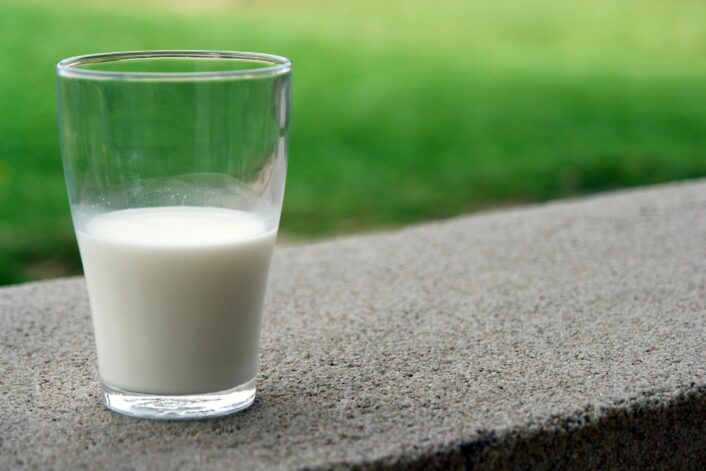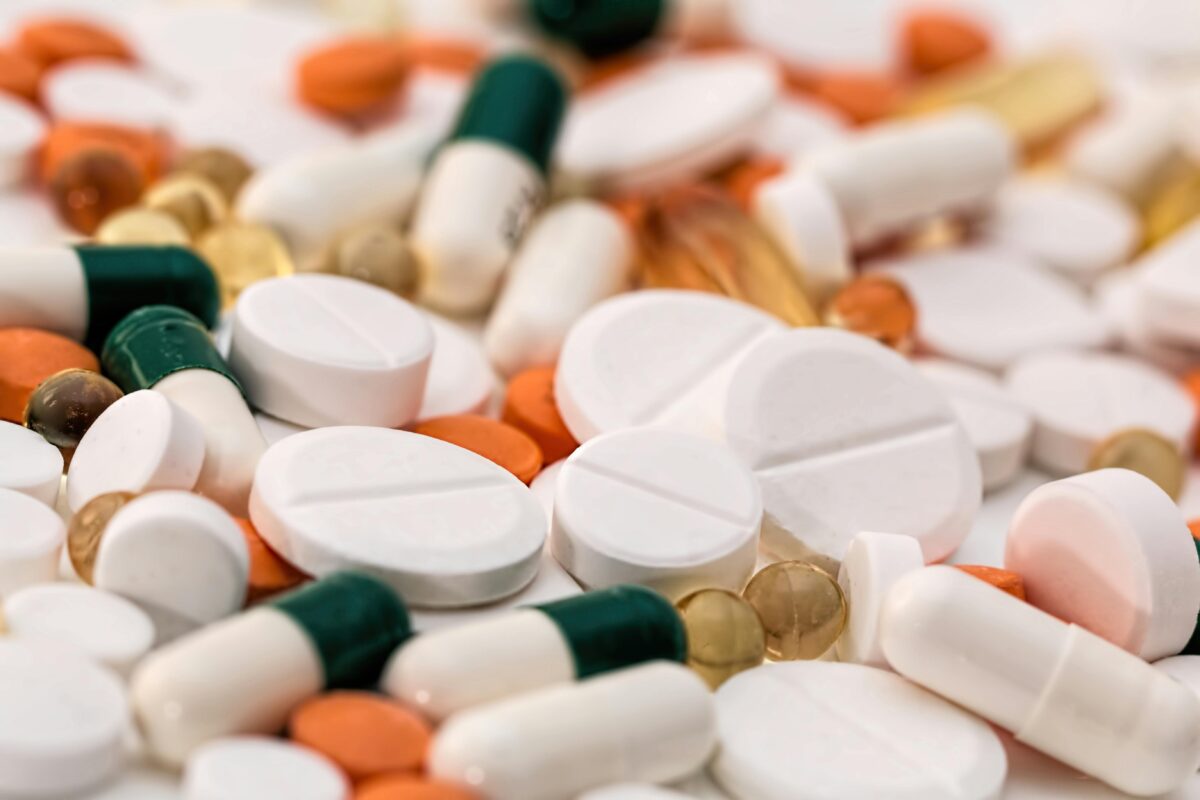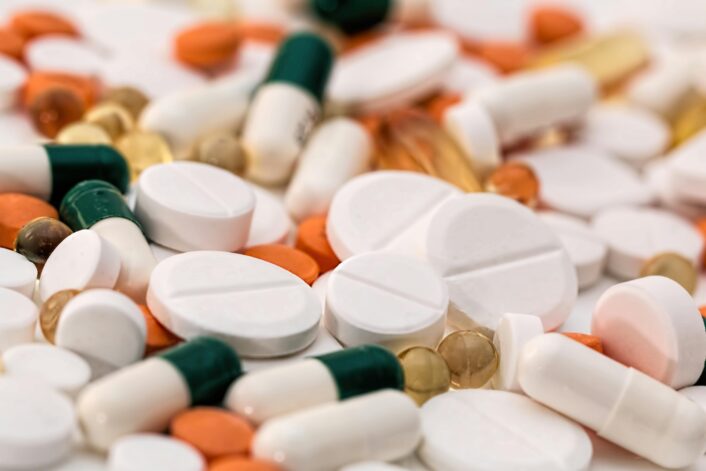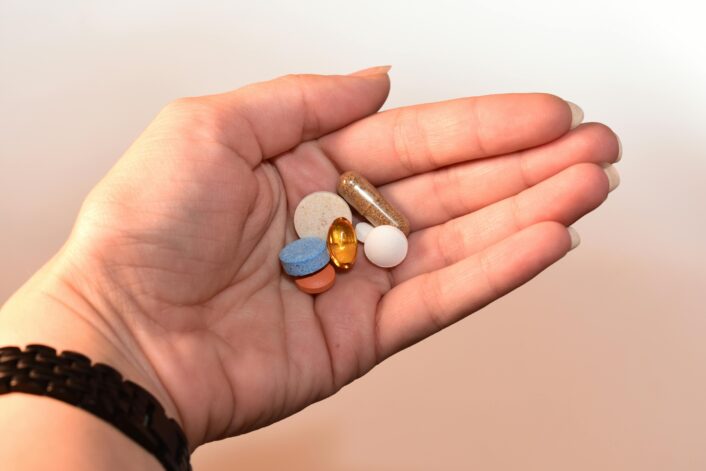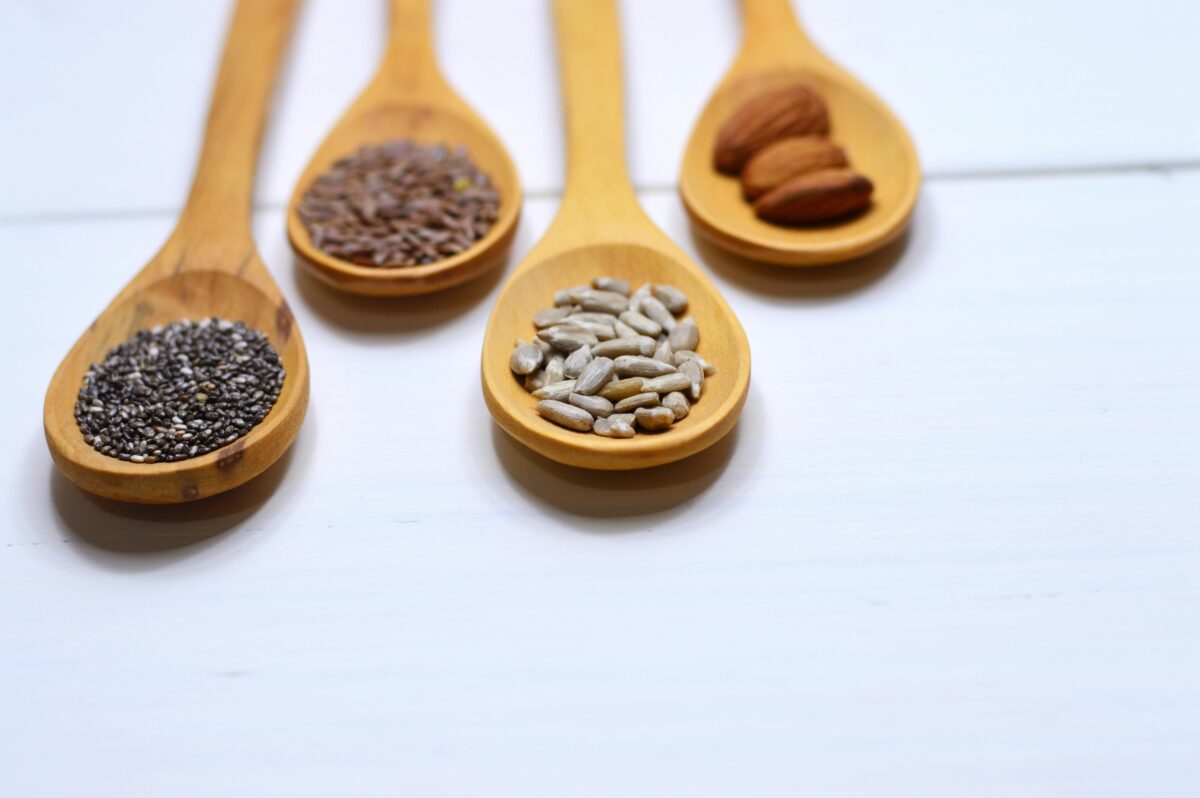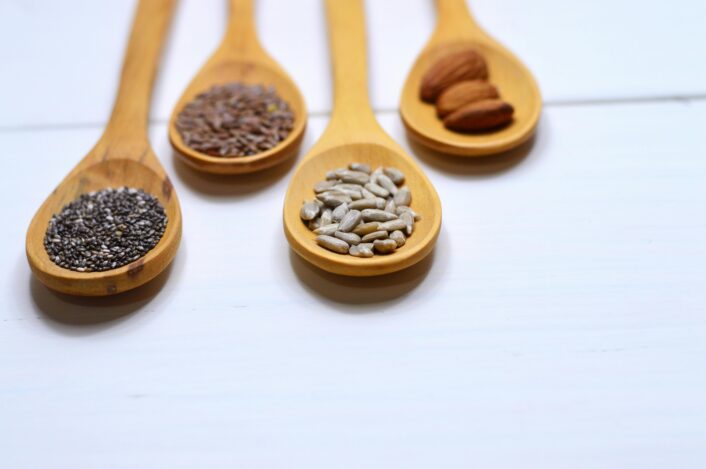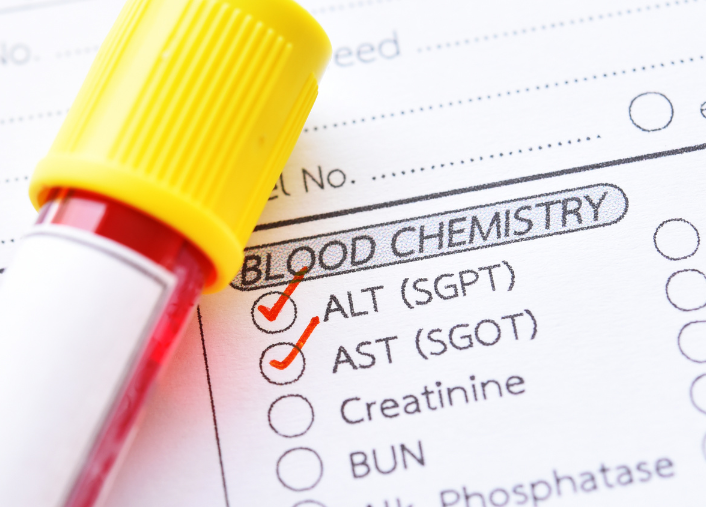Everything You Need to Know About the Genetics of Iron
Aira
on
August 12, 2024
What is Iron?
Iron, a fundamental element on the periodic table with atomic number 26, holds a pivotal role in the tapestry of our existence. Boasting remarkable properties, iron is classified as a transition metal renowned for its strength, malleability, and magnetic attributes.
This ubiquitous element constitutes a substantial portion of the Earth’s core and is integral to both biological processes and industrial applications.
In its natural state, iron is often found in the form of ores such as hematite and magnetite. The extraction of iron from these ores involves a complex metallurgical process that has been refined over centuries.
Iron’s conductivity makes it an essential component in electrical systems, while its magnetic properties find application in various technologies, from compass needles to advanced medical imaging.
On the biological front, iron is indispensable for life itself. Playing a crucial role in oxygen transport, iron is a key component of hemoglobin, the protein responsible for carrying oxygen in our blood.
However, while iron is indispensable, an imbalance can lead to health issues, highlighting the delicate equilibrium required for optimal physiological function.

Where is Iron Found?
Iron, a stalwart of the Earth’s composition, is abundantly distributed across various sources, encompassing geological, biological, and synthetic realms.
Geological Sources: The Earth’s crust is home to extensive iron deposits, primarily found in the form of ores like hematite and magnetite. These geological reservoirs, often concentrated in banded iron formations, have fueled human endeavors for millennia, serving as the backbone of iron extraction.
Other Natural Sources: Iron’s magnetic prowess isn’t limited to rocks. Natural magnetite, a magnetic iron ore, is found in various environments. Some organisms, such as magnetotactic bacteria, even exploit iron to navigate along the Earth’s magnetic field.
Understanding these diverse sources unravels iron’s influence on the natural and artificial worlds alike.
You may also like: Minerals Matter: What Genetics Say About Your Magnesium Levels
Iron and the Human Body
Iron stands as a crucial player in the symphony of human health, serving a myriad of functions vital to our well-being.
Oxygen Transport: At the core of iron’s biological importance lies its role in oxygen transport. Hemoglobin, the iron-containing protein within red blood cells, binds with oxygen in the lungs and ferries it throughout the body, sustaining cellular respiration.
Cellular Energy Production: Beyond oxygen transport, iron participates in cellular energy production. As a key component of enzymes involved in the electron transport chain, iron facilitates the generation of adenosine triphosphate (ATP), the energy currency of our cells.
Neurotransmitter Synthesis: Iron contributes to neurotransmitter synthesis, playing a role in the production of essential brain chemicals like dopamine and serotonin. This connection underscores iron’s influence on cognitive function and mood regulation.
Immune System Support: Iron is essential for a robust immune system. It aids in the proliferation of immune cells, ensuring the body’s ability to fend off infections and maintain overall health.
While iron is indispensable, an imbalance can lead to health issues. Insufficient iron can result in anemia, characterized by fatigue and weakness. Conversely, excessive iron absorption can lead to toxicity. Striking a delicate balance in iron intake is crucial, emphasizing the importance of a well-rounded, iron-rich diet for optimal health and vitality.
Food Sources for Iron: In the biological arena, iron is a dietary essential for both flora and fauna. Leafy greens, legumes, and red meat are rich sources of dietary iron. In humans, the digestive system intricately regulates iron absorption, ensuring a delicate balance for optimal health.
What Can Affect Iron Levels?
Genetic Factors
A 2017 study conducted on a Hispanic/Latino cohort, the Hispanic Community Health Study/Study of Latinos, delved into the genetic variants associated with iron-related traits. Elevated iron storage has been linked to an increased risk of diabetes, emphasizing the importance of comprehending these genetic influences.
The study uncovered significant associations between genetic variants and iron traits, providing insights into the regulation of iron in this population. Noteworthy loci with genetic variation included the TF (rs6762719/rs8177240), HFE (rs1800562), FADS2/MYRF, TMPRSS6 (rs855791), and a novel finding near the PPP1R3B locus, each associated with various iron measures at genome-wide significance.
The TF locus revealed multiple distinct signals for total iron binding capacity (TIBC) as well as serum iron level, emphasizing the complexity of genetic influences on this trait. Similarly, the HFE locus demonstrated a single signal for serum iron level and ferritin but exhibited two independent signals for TIBC and transferrin saturation (SAT).
The FADS2/MYRF locus unveiled a noteworthy association with TIBC, shedding light on the interconnected genetic factors influencing iron regulation. The TMPRSS6 locus exhibited a single independent signal, emphasizing the role of this locus in determining serum iron levels.
Most intriguingly, the study identified a novel association involving a variant near the PPP1R3B locus and TIBC, highlighting the constant expansion of knowledge in the field of genetics and iron metabolism.
Environmental Factors
Iron, a vital micronutrient for human health, is subject to a delicate equilibrium within the body. Various environmental factors can significantly influence iron levels, impacting its absorption, utilization, and potential for deficiency or excess.
Understanding these factors is crucial for maintaining optimal iron balance and overall well-being.
- Dietary Influences: The primary source of iron intake is through the diet and the type of iron matters. Heme iron, found in animal products, is more efficiently absorbed than non-heme iron from plant sources. Consuming vitamin C-rich foods alongside non-heme iron enhances absorption, while certain substances, like polyphenols in tea and coffee, can inhibit it.
- Nutrient Interactions: Interactions with other minerals can affect iron absorption. Calcium and zinc, when consumed in excess, may compete with iron for absorption sites in the intestine. On the contrary, vitamin A and copper facilitate iron absorption, highlighting the intricate interplay of nutrients in maintaining iron homeostasis.
- Gastrointestinal Conditions: Conditions affecting the gastrointestinal tract can disrupt iron absorption. Inflammatory bowel disease (IBD), celiac disease, and gastric bypass surgeries can compromise the absorption process, potentially leading to iron deficiency.
- Blood Loss: Chronic or acute blood loss significantly influences iron levels. Menstrual bleeding in women, gastrointestinal bleeding, or surgery-induced blood loss can deplete iron stores, necessitating increased dietary intake or supplementation.
- Genetic Factors: Genetic predispositions play a role in iron regulation. Hemochromatosis, a hereditary disorder, leads to excessive iron absorption and accumulation in organs, posing health risks. Conversely, genetic factors can also contribute to conditions like thalassemia, affecting the production of hemoglobin and, subsequently, iron utilization.
- Pregnancy and Lactation: During pregnancy, iron requirements escalate to support fetal development. Insufficient intake can lead to iron deficiency anemia in both the mother and child. Lactating women also require increased iron to support breast milk production.
- Environmental Toxins: Exposure to environmental toxins can impact iron metabolism. Lead, for example, competes with iron for absorption and can interfere with its utilization in various physiological processes.
- Infectious Diseases: Certain infections, particularly those causing chronic inflammation, can influence iron regulation. The body’s response to infections often involves sequestering iron to limit pathogen growth, potentially leading to functional iron deficiency even in the presence of sufficient iron stores.
- Medications: Certain medications can affect iron levels. Proton pump inhibitors, commonly used to treat acid reflux, can reduce iron absorption, while excessive use of iron supplements, often due to self-prescription, can lead to iron toxicity.
Maintaining optimal iron levels is a nuanced interplay of dietary choices, genetic predispositions, and environmental influences. Recognizing these factors enables individuals to make informed decisions regarding their nutritional intake, potentially mitigating the risk of iron-related health issues.
Regular monitoring, especially for vulnerable populations, ensures early detection and intervention, promoting overall health and well-being.
Is Iron and Ferrous Sulfate the Same?
Iron and ferrous sulfate, while related, are distinct substances with different compositions and applications. Iron is a chemical element with the symbol Fe and atomic number 26.
It exists in various forms, including elemental iron and iron compounds. In the context of supplements or fortification, iron can be found as both ferrous and ferric ions. Ferrous iron (Fe2+) is the more bioavailable form and is commonly used for nutritional supplementation.
Ferrous sulfate, on the other hand, specifically refers to a compound composed of ferrous iron and sulfuric acid. Its chemical formula is FeSO4. In the context of iron supplements, ferrous sulfate is a commonly used source of ferrous iron due to its high solubility and bioavailability. It comes in different forms, such as ferrous sulfate monohydrate or heptahydrate.
The key distinction lies in their chemical forms. “Iron” is a broad term encompassing the element in various states, while “ferrous sulfate” is a specific compound containing iron in the ferrous state and combined with sulfate.
Ferrous sulfate is a more targeted term, referring to a compound commonly utilized in iron supplements for addressing deficiencies due to its efficient absorption by the human body.
You may also be interested in: Does Genetics Dictate Your Vitamin E Levels?
What are the Symptoms of Iron Deficiency and Iron Overload?
Maintaining a delicate balance in iron levels is crucial for optimal health. Both iron deficiency and iron overload can manifest through various symptoms, highlighting the importance of monitoring iron status.
Iron Deficiency Symptoms
- Fatigue and Weakness: Iron deficiency compromises the production of hemoglobin, leading to reduced oxygen-carrying capacity in the blood. This can result in fatigue, weakness, and decreased exercise tolerance.
- Pale Skin and Cold Extremities: Insufficient iron affects red blood cell production, leading to paleness and cold extremities due to impaired oxygen delivery to tissues.
- Shortness of Breath: Inadequate oxygen transport may cause shortness of breath, even with minimal physical exertion, as the body struggles to meet its oxygen demands.
- Headaches and Dizziness: Reduced oxygen supply to the brain can result in headaches and dizziness, affecting cognitive function and concentration.
- Brittle Nails and Hair Loss: Iron deficiency impacts the health of tissues, manifesting in brittle nails and hair loss due to compromised blood supply to hair follicles.
- Difficulty Swallowing: In severe cases, iron deficiency can lead to the development of a condition known as Plummer-Vinson syndrome, characterized by difficulty swallowing (dysphagia) and the formation of small, painful growths in the throat.
Iron Overload Symptoms
Iron overload, or hemochromatosis, can lead to fatigue and joint pain. Excessive iron deposition in tissues can contribute to inflammation and discomfort.
- Abdominal Pain and Liver Issues: Iron overload often affects the liver, causing abdominal pain, and hepatomegaly (enlarged liver), and potentially leading to more severe conditions like cirrhosis.
- Skin Discoloration: The excess iron can cause skin discoloration, presenting as a bronze or gray hue. This is particularly noticeable in areas with increased sun exposure.
- Heart Problems: Iron overload can contribute to heart problems, including arrhythmias and heart failure. Iron accumulates in the heart, interfering with its normal function.
- Diabetes and Pancreatic Damage: Hemochromatosis is associated with an increased risk of diabetes as excess iron damages the pancreas. Symptoms may include increased thirst, frequent urination, and unexplained weight loss.
- Impotence and Hormonal Imbalances: In males, iron overload may lead to impotence and hormonal imbalances. It can disrupt the normal functioning of the endocrine system.
Recognizing these symptoms is crucial for early detection and intervention. Routine monitoring of iron levels, especially in populations at risk for deficiency or overload, ensures timely management and supports overall health.
Individuals experiencing these symptoms should seek professional medical advice for appropriate diagnosis and treatment.
What is the Suggested Daily Intake of Iron?
The recommended daily intake of iron varies based on age, gender, and physiological status, with distinct guidelines established for different population groups.
- Infants: For infants aged 0-6 months, the recommended intake is 0.27 milligrams (mg) per day. Between 7-12 months, the requirement increases to 11 mg per day to support rapid growth and development.
- Children and Adolescents: Children aged 1-3 years require 7 mg of iron daily, while those aged 4-8 years need slightly more at 10 mg per day. During adolescence, the recommended intake increases significantly, with boys aged 9-13 years needing 8 mg per day and girls requiring 15 mg per day due to menstrual blood loss.
- Adults: For adult men and postmenopausal women, the recommended daily intake is 8 mg of iron. However, premenopausal women have higher requirements due to menstrual blood losses, necessitating 18 mg of iron per day.
- Pregnant Women: Pregnant women have notably higher iron needs to support the expansion of blood volume and fetal development. The recommended intake during pregnancy is 27 mg per day.
- Vegetarians and Vegans: Individuals following vegetarian or vegan diets should ensure adequate intake of non-heme iron sources, as plant-based iron is less readily absorbed compared to heme iron from animal products. Consuming vitamin C-rich foods alongside plant-based iron sources can enhance absorption.
- Elderly: Older adults may have altered absorption and utilization of iron due to age-related changes in gastrointestinal function. Regular monitoring of iron status and dietary intake is essential to prevent deficiencies or excesses.
Understanding the recommended daily intake of iron across different age groups and physiological states is crucial for maintaining optimal health and preventing iron-related disorders.
Individuals should strive to meet their iron needs through a balanced diet rich in iron-containing foods, supplemented as necessary under the guidance of healthcare professionals to ensure proper absorption and utilization.
Benefits of Iron
Iron, a vital micronutrient, plays a pivotal role in supporting various physiological functions within the human body. From oxygen transport to energy production, iron’s benefits are diverse and indispensable.
Oxygen Transport
The primary function of iron is in the formation of hemoglobin, the oxygen-carrying molecule in red blood cells. Hemoglobin binds with oxygen in the lungs and transports it to tissues and organs, ensuring adequate oxygen supply for cellular respiration and energy production.
Cellular Energy Production
Iron is an essential component of enzymes involved in cellular respiration, such as cytochromes in the electron transport chain. This process occurs within mitochondria, where iron facilitates the transfer of electrons, leading to the production of adenosine triphosphate (ATP), the energy currency of cells.
Immune Function
Iron is crucial for a robust immune system. It supports the proliferation and activity of immune cells, including lymphocytes and macrophages, enhancing the body’s ability to defend against infections and diseases.
Cognitive Function
Iron is implicated in cognitive function and brain health. It participates in the synthesis of neurotransmitters like dopamine and serotonin, essential for mood regulation, cognition, and overall mental well-being.
Development and Growth
During periods of rapid growth and development, such as infancy, childhood, and adolescence, iron is vital. It is necessary for the synthesis of hemoglobin, myoglobin (a protein in muscles that stores and transports oxygen), and various enzymes critical for tissue growth and repair.
Temperature Regulation
Iron contributes to the regulation of body temperature. By facilitating oxygen transport, iron ensures efficient cellular respiration, which plays a role in maintaining the body’s metabolic rate and, consequently, temperature homeostasis.
Detoxification
Iron is involved in detoxification processes within the liver. It plays a role in the synthesis of enzymes responsible for breaking down and eliminating toxins from the body.
Hormone Synthesis
Iron is a cofactor for enzymes involved in the synthesis of hormones, including thyroid hormones. Proper iron levels are essential for the normal functioning of the endocrine system and the regulation of various physiological processes.
Cardiovascular Health
Adequate iron levels contribute to cardiovascular health. Iron is involved in the synthesis of myoglobin, which stores oxygen in muscle tissues, including the heart. Additionally, iron participates in the regulation of blood pressure and the prevention of anemia, supporting overall heart function.
Iron’s benefits extend far beyond its role in preventing anemia. From oxygen transport to immune support, cognitive function, and growth, iron is a multifaceted nutrient essential for overall health and well-being.
Ensuring an adequate and balanced intake of iron through a varied and nutrient-rich diet is fundamental to harnessing these benefits and maintaining optimal physiological function.
LifeDNA’s Iron Levels Report
Unlock the secrets to your optimal health with LifeDNA’s Iron Levels Trait Report – a scientifically backed and comprehensive analysis that dives deep into your unique genetic profile. Discover the personalized insights you need to understand and optimize your iron levels, ensuring your body functions at its best.
At LifeDNA, we understand the importance of wellness in your daily life. Our Vitamins and Supplements Report, including the Iron Levels Trait, empowers you with knowledge about what your body truly needs. Your genetic makeup influences how your body absorbs and utilizes iron, making this report an invaluable tool in tailoring your nutrition and supplementation.
But that’s not all – explore our other specialized reports on traits like Phosphorus Levels, Melatonin Levels, and Zinc Levels. With 7 main categories and nearly 200 trait reports available under LifeDNA’s Vitamins & Supplements, Wellness, Nutrition, Fitness, Sleep, Skincare, and Personality & Cognition Reports, your journey to wellness is personalized and comprehensive.
Take charge of your well-being today! Avail of LifeDNA’s subscriptions and embark on a wellness journey designed uniquely for you. Empower yourself with the knowledge to make informed choices that align with your genetic blueprint. Your body is unique – your wellness plan should be too. Start your LifeDNA journey now for a healthier, happier you.
Summary
- Iron is a transition metal, essential for biological processes and industrial applications.
- Iron is found in Earth’s core, geological deposits, and several food items, iron is synthesized in various forms for industrial use.
- Iron is crucial for oxygen transport in hemoglobin, cellular energy production, neurotransmitter synthesis, and immune support.
- Iron deficiency symptoms include fatigue, pale skin, shortness of breath, and brittle nails. Iron overload may lead to abdominal pain, skin discoloration, heart issues, diabetes, and hormonal imbalances.
- Iron is essential for oxygen transport, cellular energy production, immune function, cognitive health, and growth.
- Understanding genetic, environmental, and dietary influences on iron levels is crucial for maintaining optimal health and preventing related disorders. Regular monitoring and informed nutritional choices contribute to overall well-being.
References
- https://medlineplus.gov/iron.html
- https://www.floridahealth.gov/AlternateSites/DOH_LMS_Resources/WIC/az-hematology/CourseFiles/page4462.html#:~:text=Hemoglobin%20contains%20iron%2C%20which%20allows,blood%20cells%20their%20color%2C%20too.
- https://www.ga.gov.au/education/minerals-energy/australian-mineral-facts/iron#:~:text=In%20the%20Earth’s%20crust%20iron,(Fe3O4).
- https://www.nhs.uk/conditions/vitamins-and-minerals/iron/
- https://www.nature.com/articles/ncomms5926
- https://www.ncbi.nlm.nih.gov/pmc/articles/PMC7642088/#:~:text=Magnetotactic%20bacteria%20(MTB)%20produce%20iron,impact%20the%20iron%20biogeochemical%20cycle.
- https://www.sciencedirect.com/topics/earth-and-planetary-sciences/iron-alloy
- https://www.sciencedirect.com/science/article/pii/S0006295217307049#:~:text=Iron%20is%20essential%20for%20many,dopamine%20and%20further%20to%20norepinephrine.
- https://www.ncbi.nlm.nih.gov/pmc/articles/PMC4464783/#:~:text=of%20Iron%20Metabolism-,Iron%20is%20required%20for%20oxygen%20transport%2C%20energy%20production%2C%20DNA%20synthesis,a%20wide%20range%20of%20diseases.
- https://kidshealth.org/en/parents/moms-nutrients.html#:~:text=taking%20a%20supplement.-,Iron,tired%20and%20have%20other%20problems.
- https://pubmed.ncbi.nlm.nih.gov/31669099/#:~:text=receptor%2Dmediated%20pathway-,Proton%20pump%20inhibitors%20block%20iron%20absorption%20through%20direct%20regulation%20of,Toxicol%20Lett.
- https://www.webmd.com/drugs/2/drug-4127/ferrous-sulfate-oral/details
- https://www.mayoclinic.org/diseases-conditions/iron-deficiency-anemia/symptoms-causes/syc-20355034
- https://my.clevelandclinic.org/health/diseases/14971-hemochromatosis-iron-overload
- https://ods.od.nih.gov/factsheets/Iron-Consumer/
- https://www.medparkhospital.com/en-US/lifestyles/health-benefits-of-iron
- https://journals.plos.org/plosone/article?id=10.1371/journal.pone.0287703#:~:text=Iron%20supplementation%20improved%20intelligence%2C%20attention,risk%20of%20impaired%20cognitive%20development.
- https://www.sciencedirect.com/science/article/pii/S0268960X21000722
- https://www.ncbi.nlm.nih.gov/pmc/articles/PMC3999603/
*Understanding your genetics can offer valuable insights into your well-being, but it is not deterministic. Your traits can be influenced by the complex interplay involving nature, lifestyle, family history, and others.
Our reports have not been evaluated by the Food and Drug Administration. The contents on our website and our reports are for informational purposes only, and are not intended to diagnose any medical condition, replace the advice of a healthcare professional, or provide any medical advice, diagnosis, or treatment. Consult with a healthcare professional before making any major lifestyle changes or if you have any other concerns about your results. The testimonials featured may have used more than one LifeDNA or LifeDNA vendors’ product or reports.


